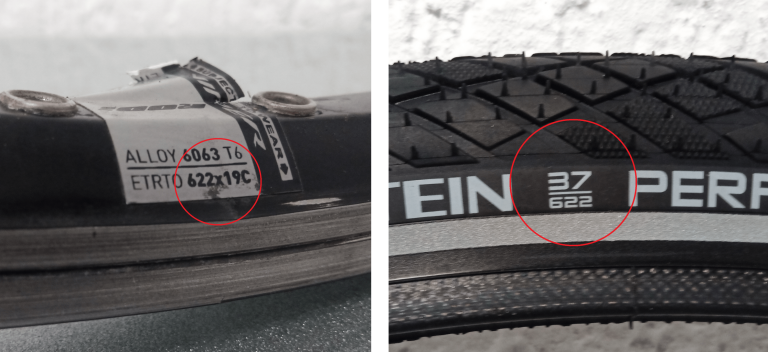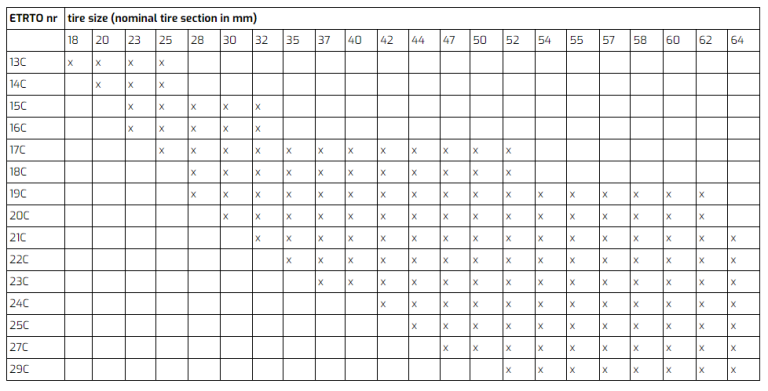Klantenservice
Brief explanation; Instead of Inches, which is an error-prone unit of measurement, it is preferable to work with millimeters, which are much more accurate.
ETRTO size for tires:
ETRTO stands for European Tire and Rim Technical Organization and was set up to be a precise sizing system between rim and tire manufacturers in Europe. This way they can make well-fitting products and offer clear dimensions for end users.
The ETRTO size is printed on the tire and indicates the internal diameter of the tire in combination with the width of the tire.
For example, your tire says: 37-622, in this case the width of the tire is 37mm and the internal diameter of the tire is 622mm
BSD size for rims:
The diameter of the rim is measured from the points where the tire rests.
For example, your rim says: 622x19C.
622 stands for the diameter of the rim. 19C means that the rim is 19 millimeters wide between the raised edges and “Crotchet” means that the edges have a lip into which the tire can engage.
This is standard nowadays. Old-fashioned granny bike rims (V38, Schothorst) do not have that edge.
The rim size is usually engraved on the rim and often also shown on a sticker. See photos below for examples.

As you can see, both rim and tire have a match in ETRTO 622 and can therefore be combined with each other.
On the sticker of the above rim you will see 622X19C.
19C means that the space between the 2 raised edges of the rim (where the tire is mounted) is 19 millimeters wide.
This width determines the width of the tires that can be mounted on the rim. For example, you cannot mount wide mountain bike tires on a narrow racing bike rim.
See the table below for an overview of which rims and tires can best be combined with each other.


